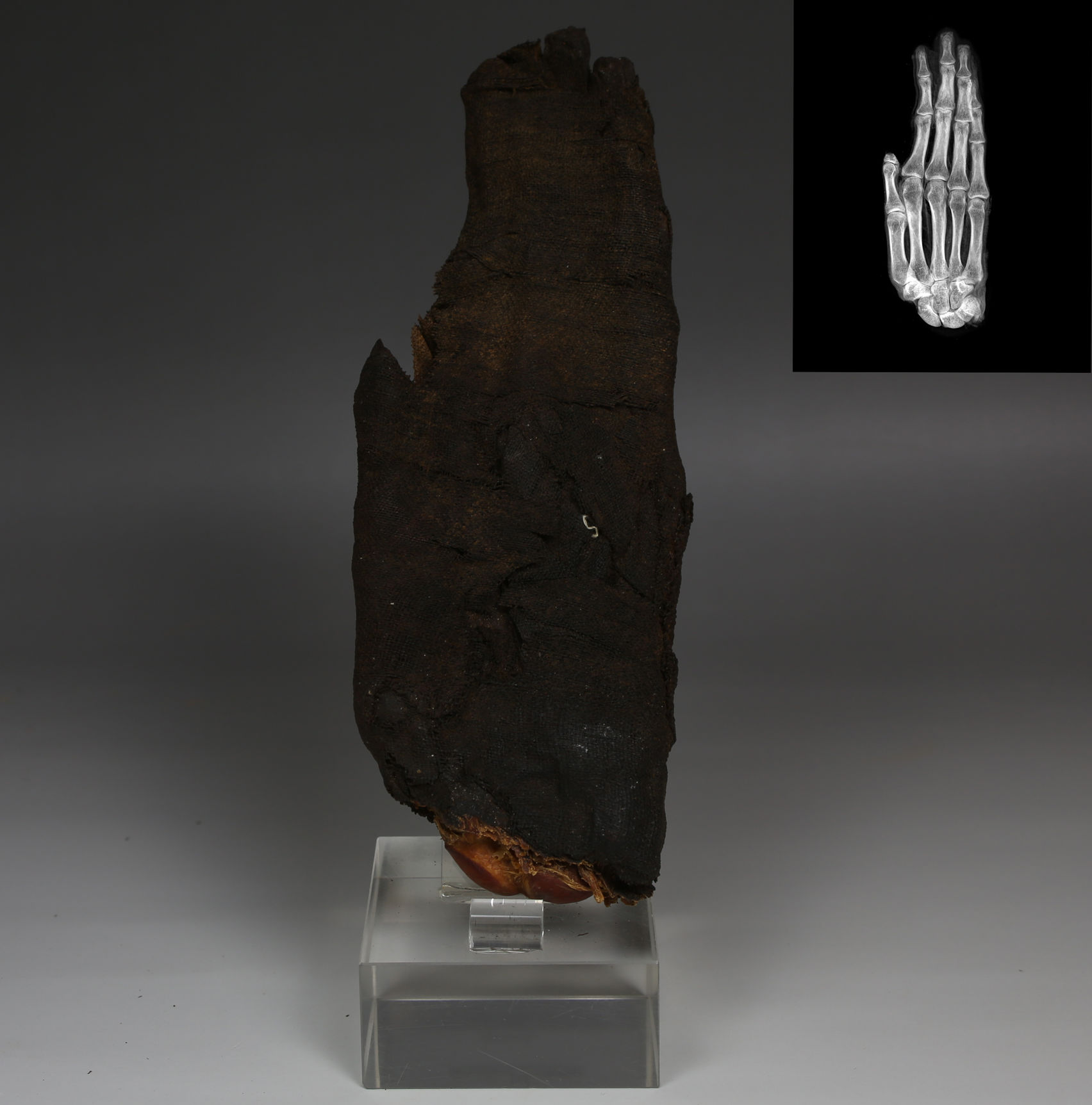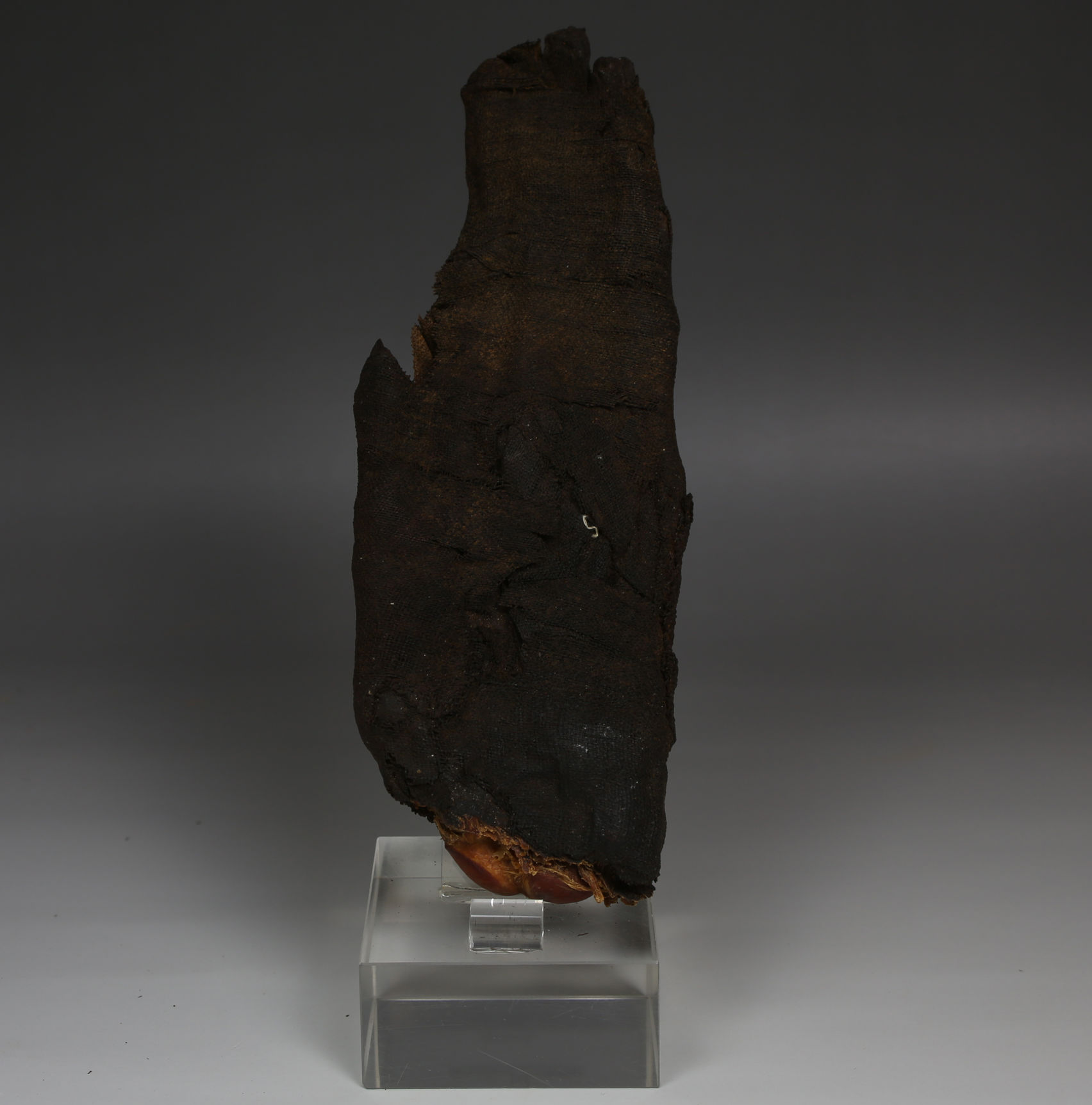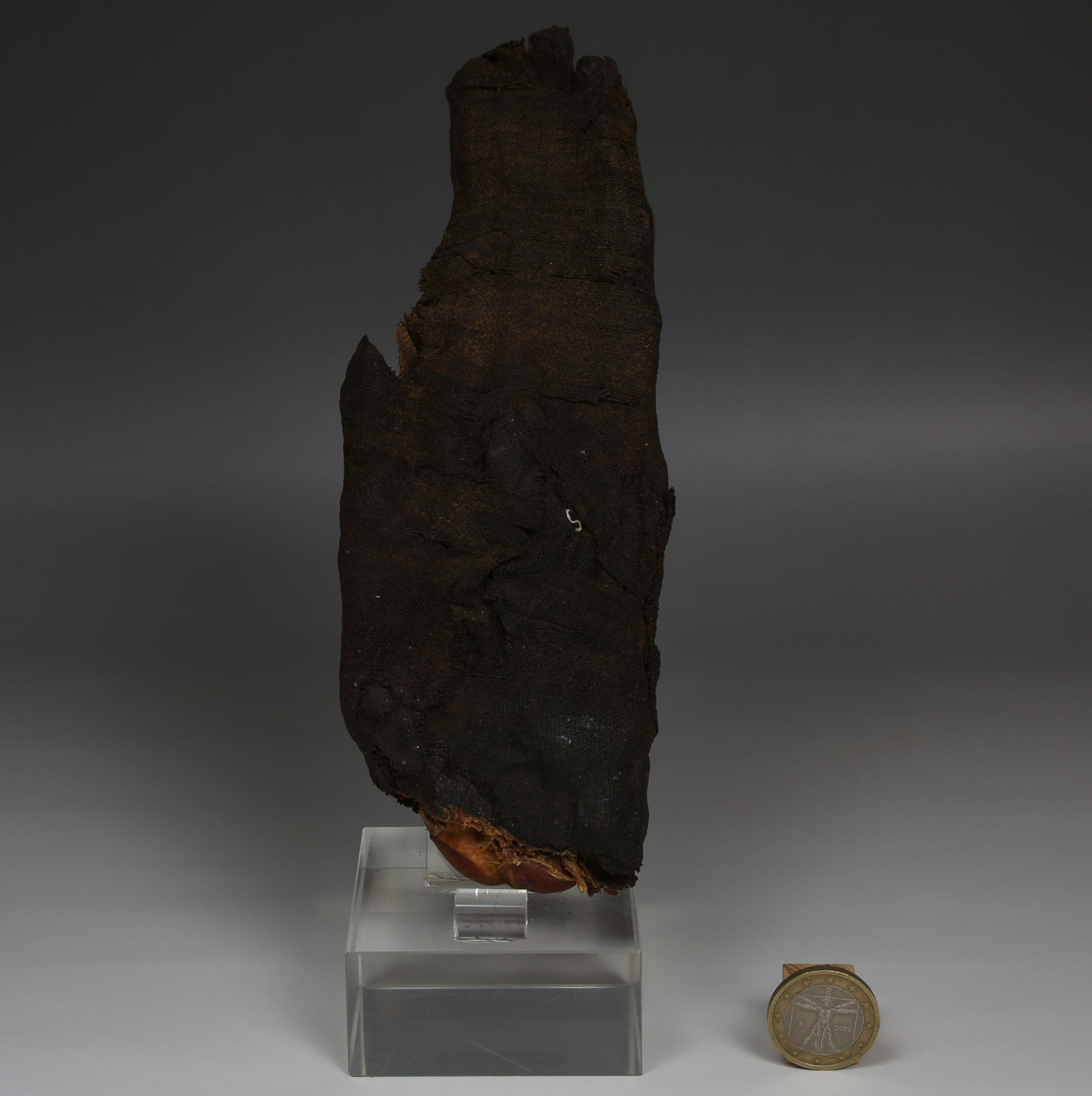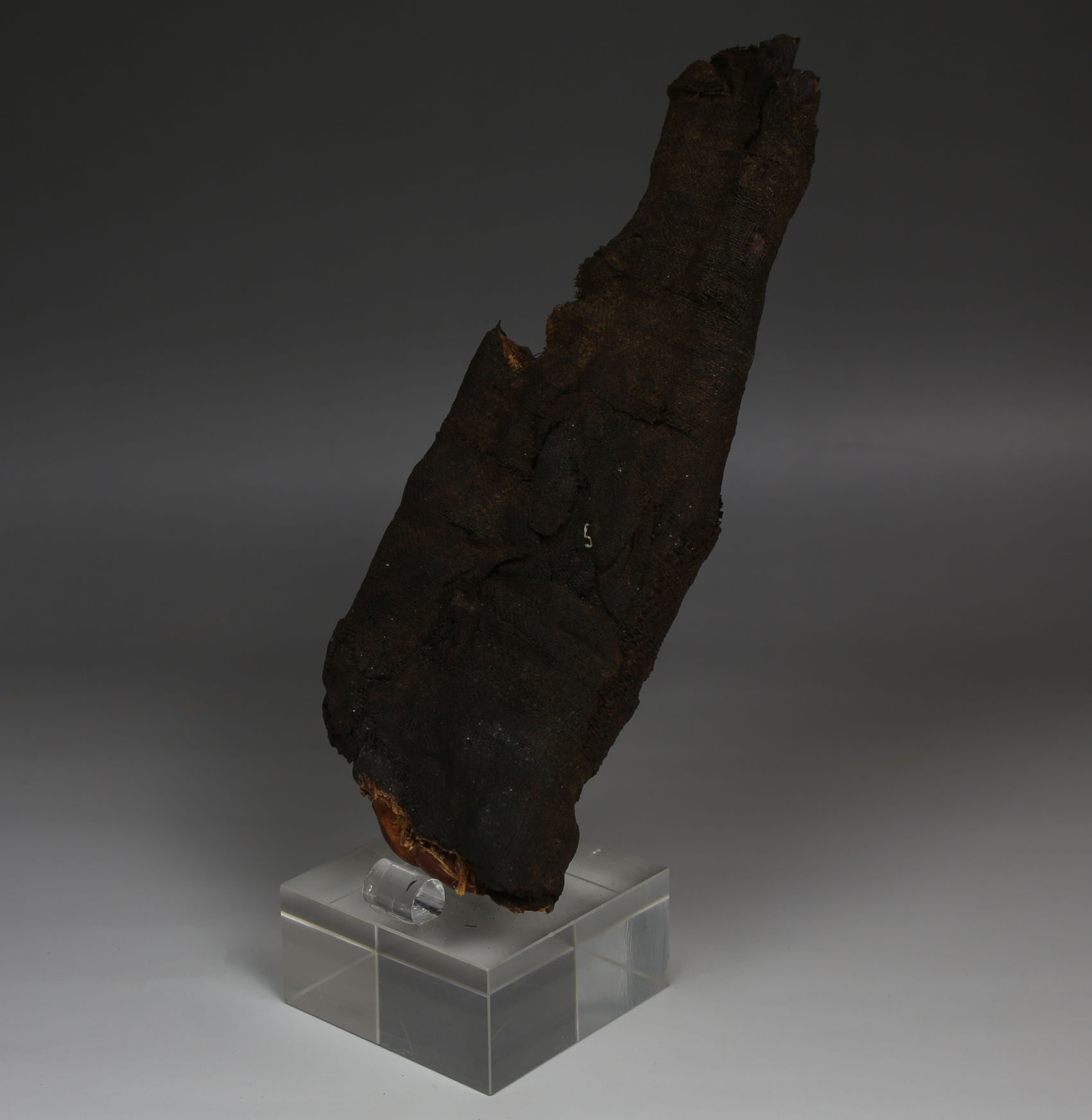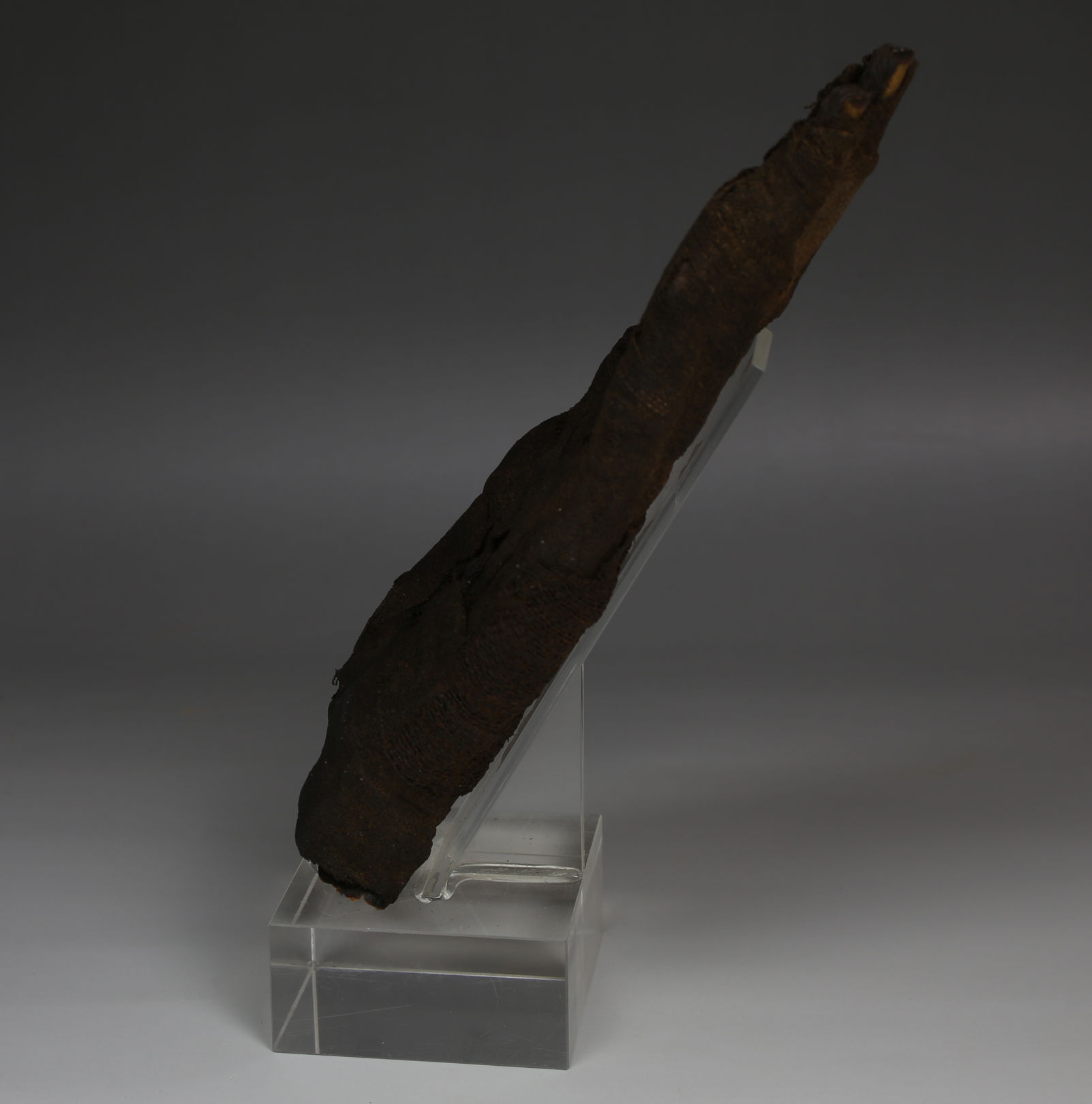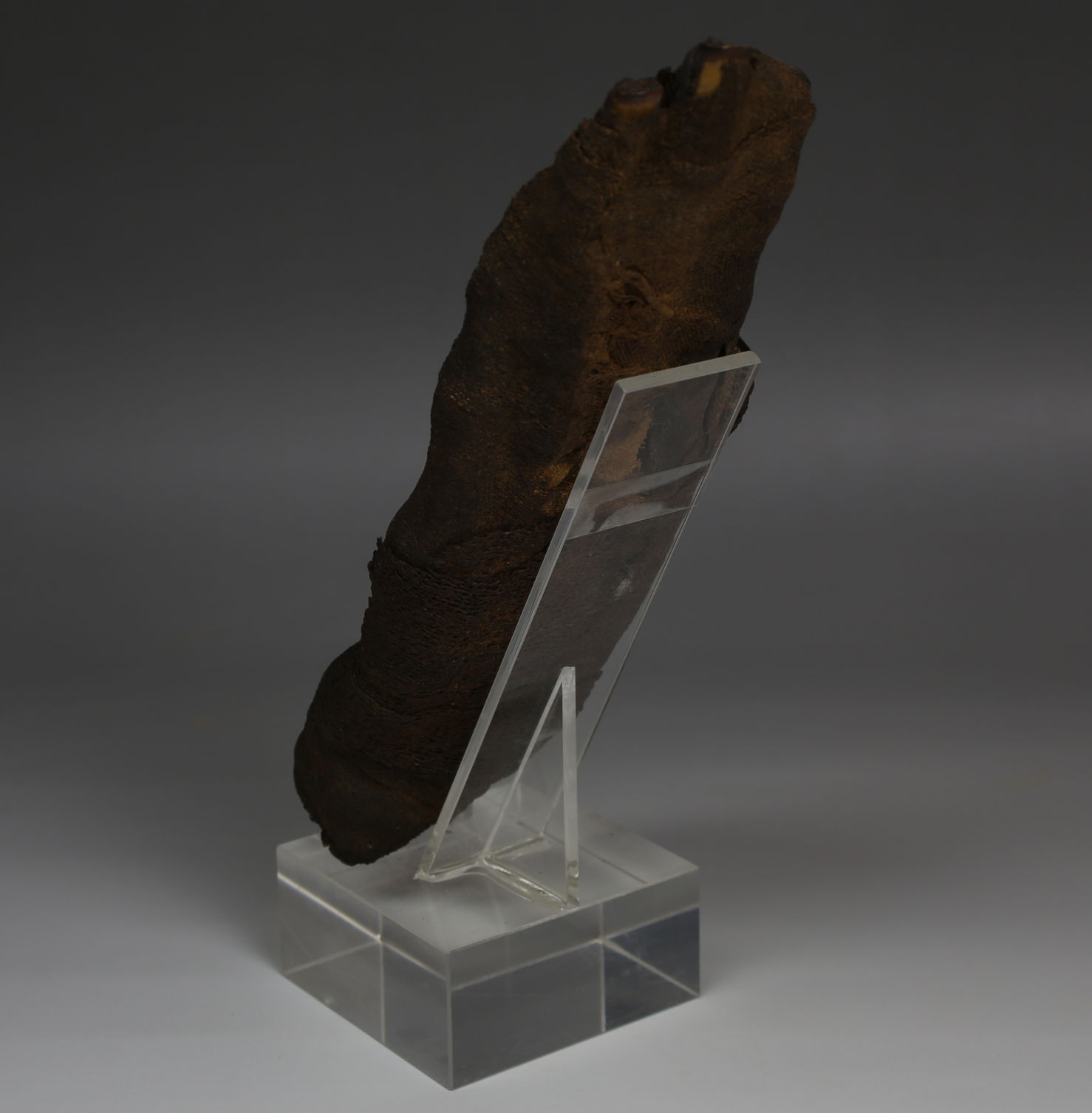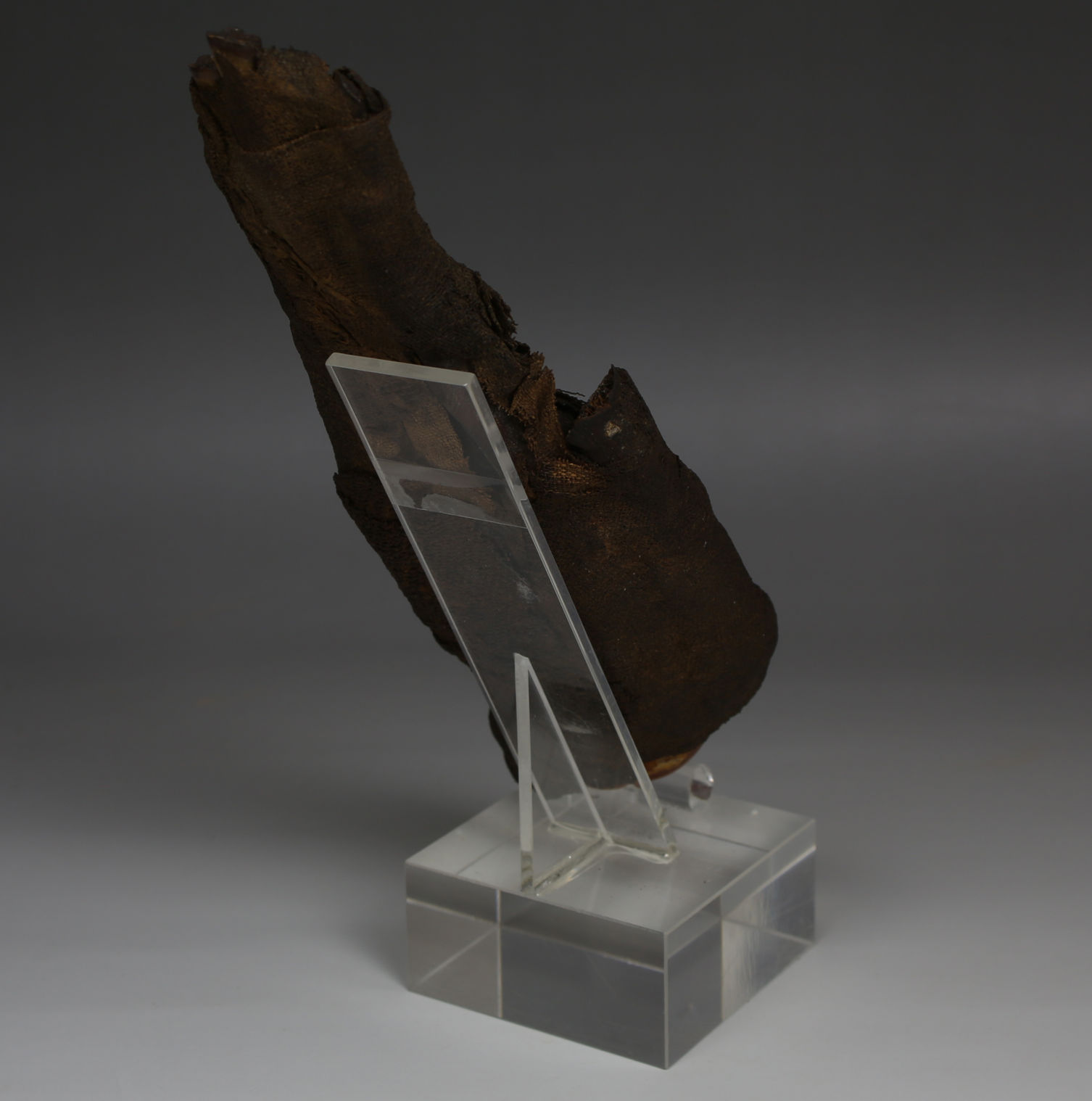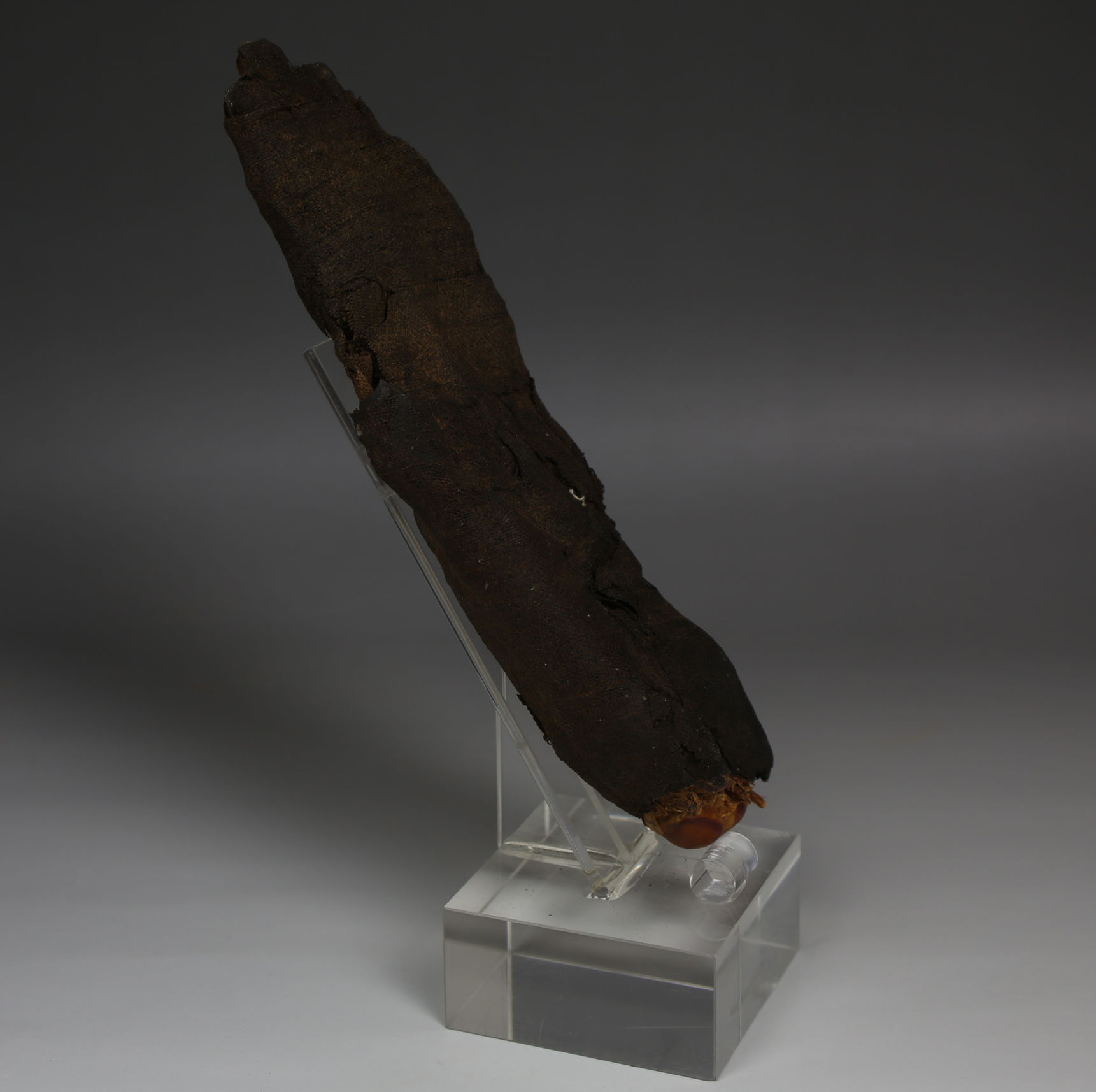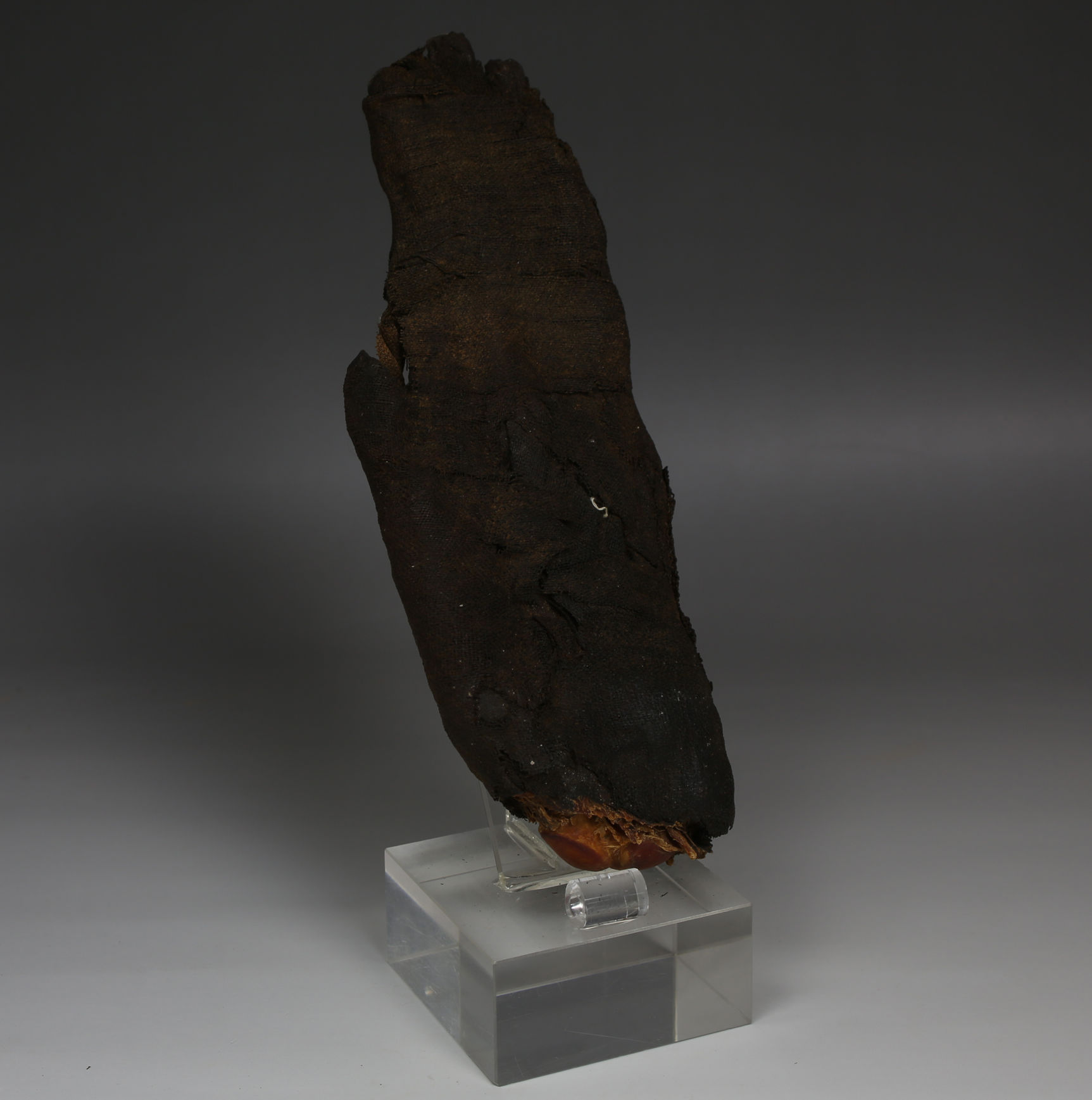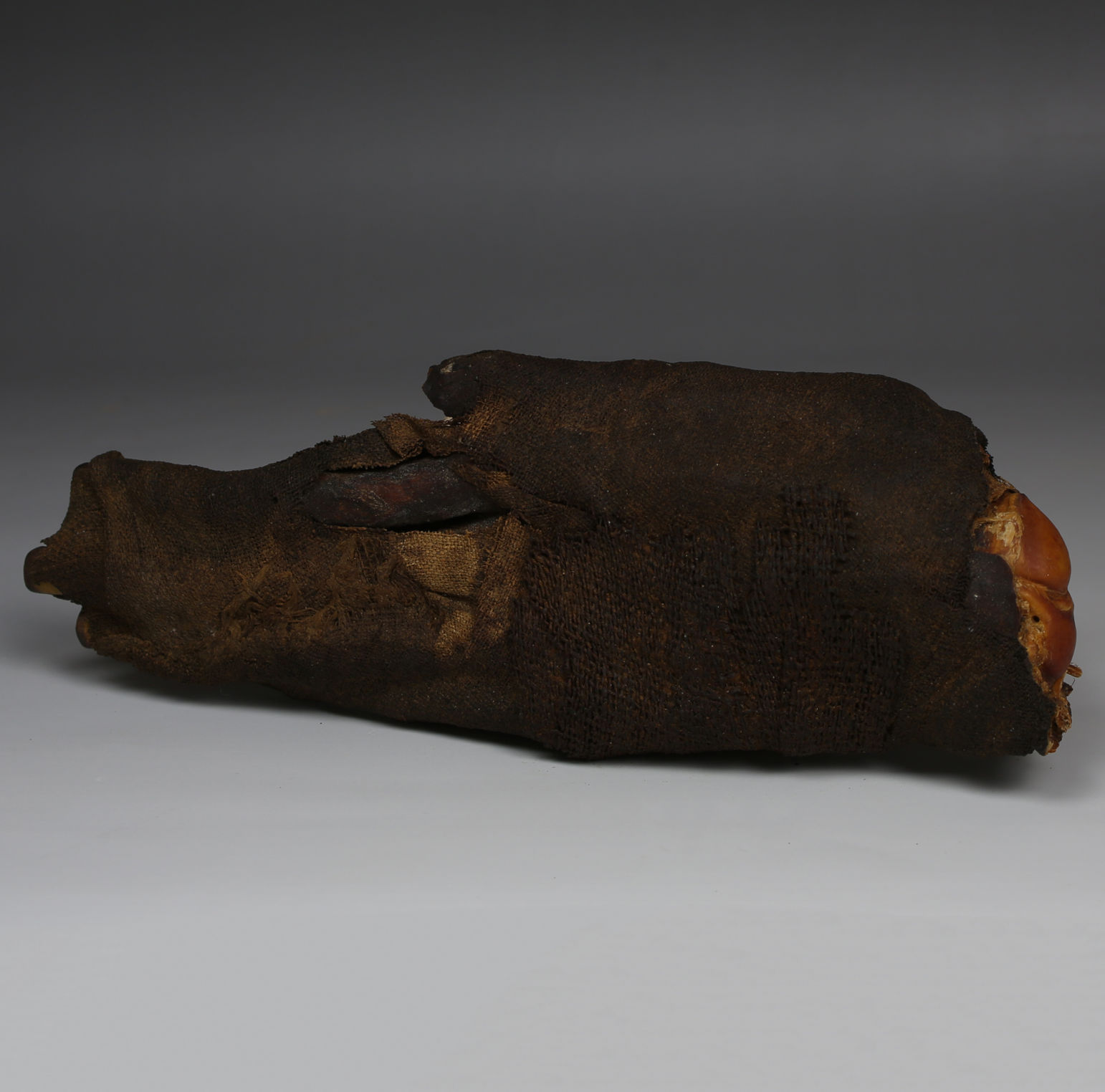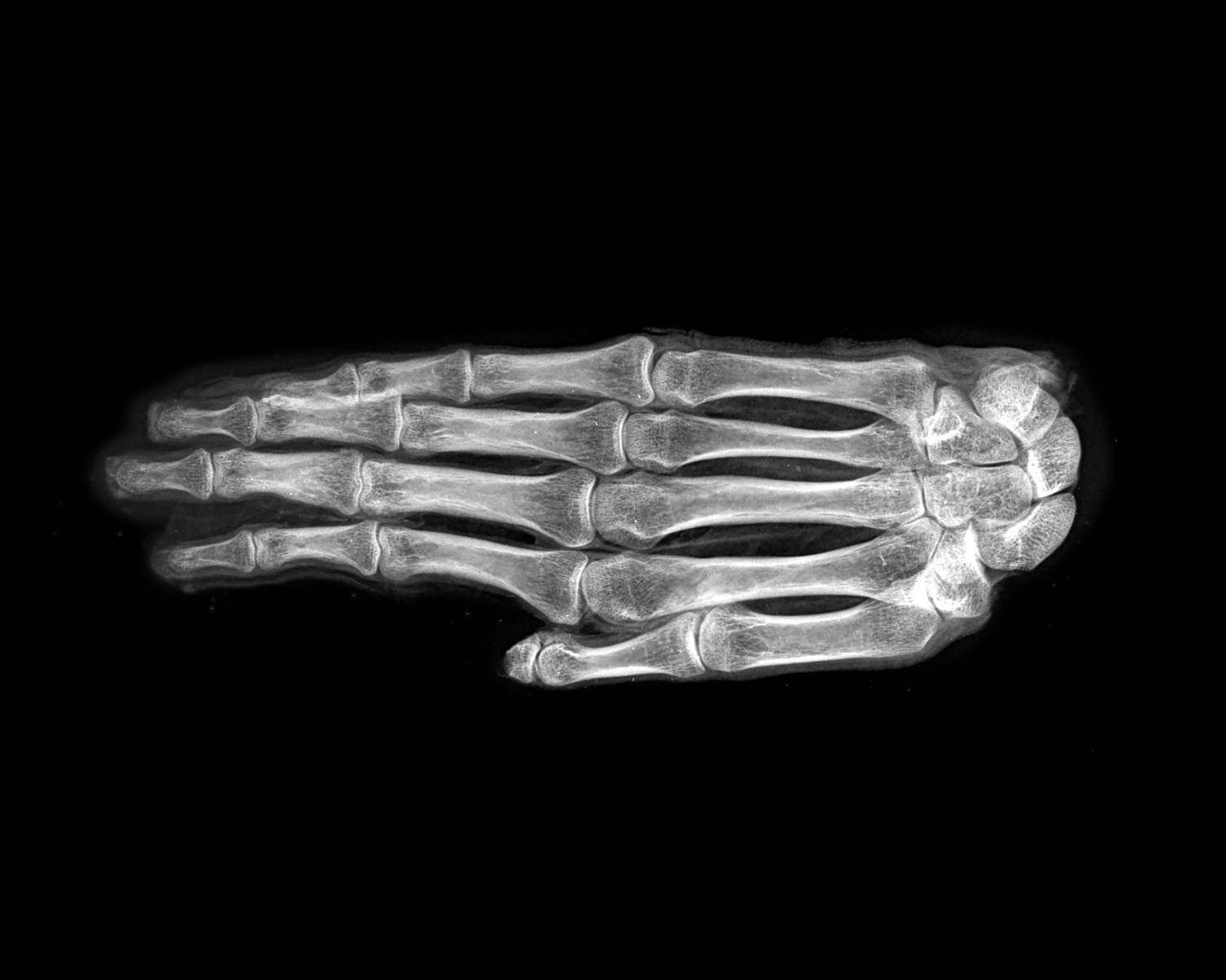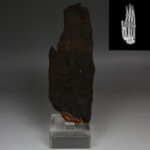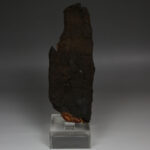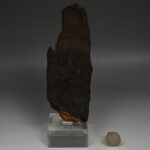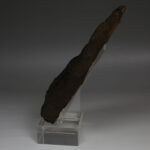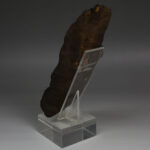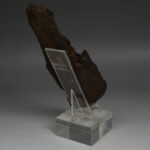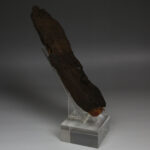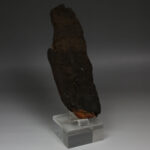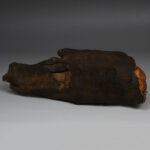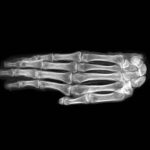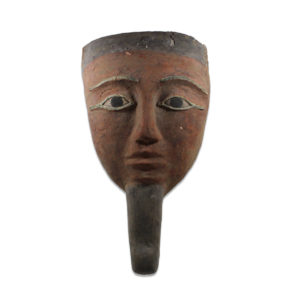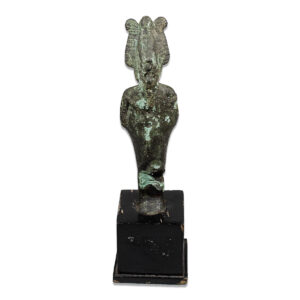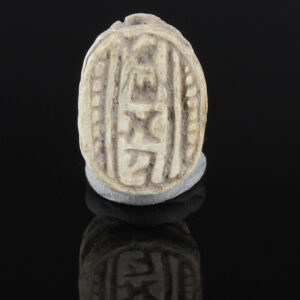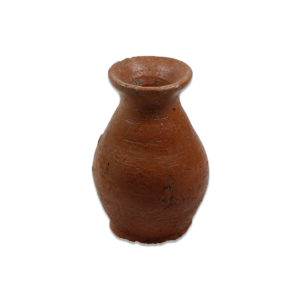Description
| ITEM | Mummified hand with X-Ray |
| MATERIAL | Bone and linen |
| CULTURE | Egyptian |
| PERIOD | Late Period, 664 – 332 B.C |
| DIMENSIONS | 200 mm x 73 mm x 30 mm |
| CONDITION | Good condition. Includes digital copy of the X-ray test |
| PROVENANCE | Ex French private collection, Auvergne, acquired before 1980s |
In ancient Egypt’s Late Period (664–332 BCE), mummification techniques had evolved to become highly sophisticated, with an emphasis on preserving the body as a complete and eternal vessel for the afterlife. During this time, mummified bodies were carefully disassembled, treated, and reassembled to ensure preservation. Internal organs, including the liver, lungs, stomach, and intestines, were removed early in the process, as they were prone to rapid decay. These organs were usually embalmed separately and stored in canopic jars, each protected by one of the Four Sons of Horus, deities assigned to guard specific organs.
However, by the Late Period, the practice shifted slightly, and sometimes the internal organs were treated and then wrapped in linen before being returned to the body cavity. In other cases, the jars were still used, but the shift indicated a concern with keeping the mummy intact as a whole. The heart, believed to be the center of intelligence and emotion, was often left inside the body because it would be weighed in the afterlife during the judgment by Osiris. Any remnants of the brain were removed through the nose using specialized tools, a process called excerebration, although the brain itself was not seen as essential for the afterlife.
Beyond the internal organs, the entire body was carefully wrapped in layers of linen, with amulets and magical objects inserted between layers to provide protection. Each part of the body, such as the fingers, toes, arms, and legs, was individually wrapped to maintain the body’s integrity. The wrapping itself became a ritual, where priests would recite spells from the Book of the Dead and other sacred texts to ensure the deceased’s safe passage into the afterlife.


